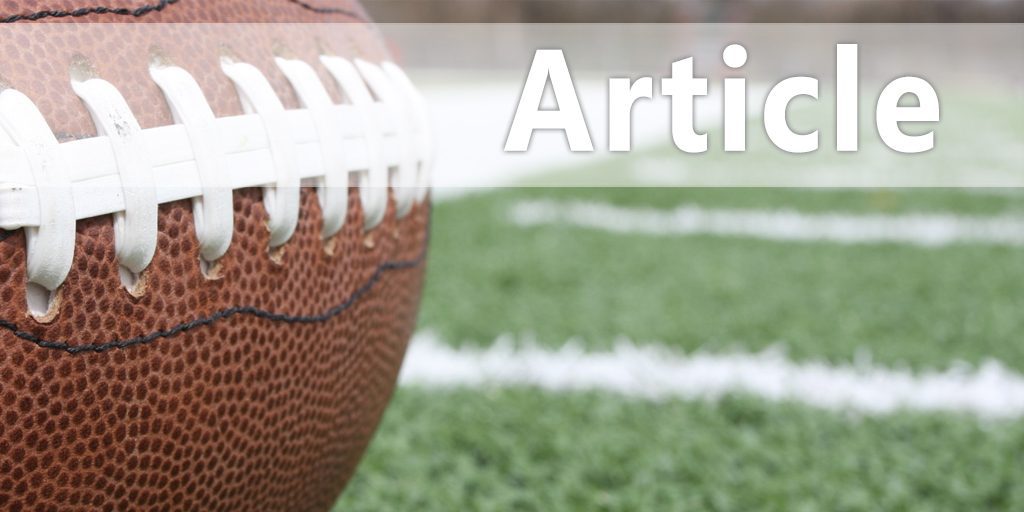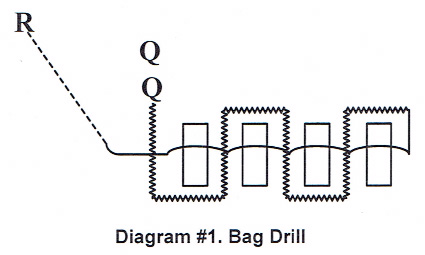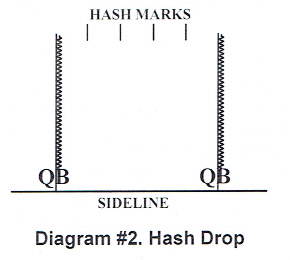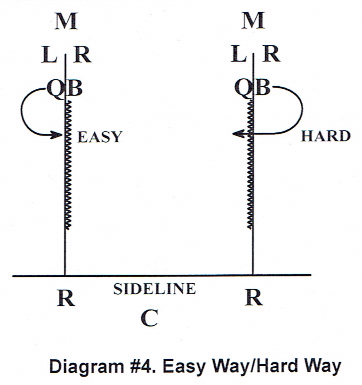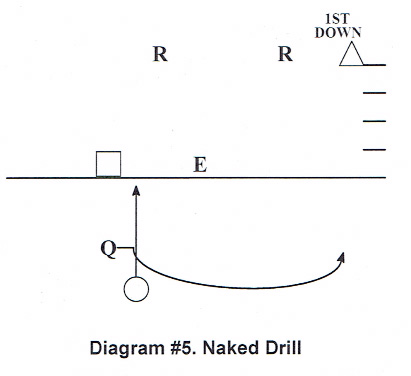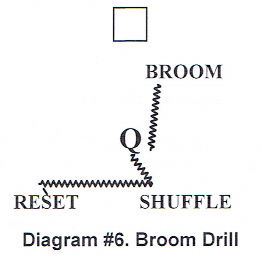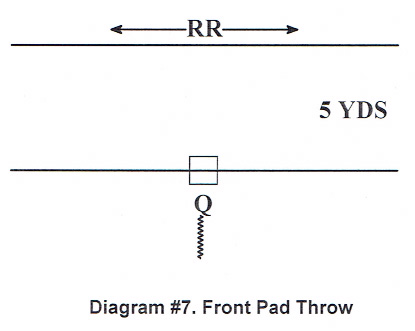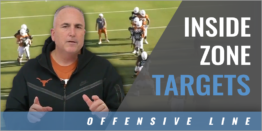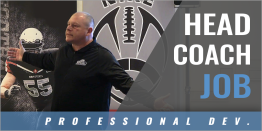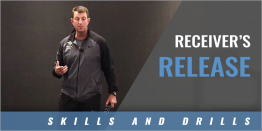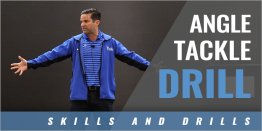| Relationships and Quarterback Development |
| By: Chad Morris - Southern Methodist Univ.
Originally Published in: Nike 2015 Coach of the Year Clinics Football Manual - By Earl Browning Provided by: Nike Coach of the Year I brought a couple of guys with me today. Donny McElveen is my offensive graduate assistant. Donny played quarterback for us at Clemson. His grandfather, John McKissick, is Athletic Director and Head Football Coach at Summerville High School in South Carolina. He is the winningest high school football coach in the country. Donny is a great mind and wants to be a coach. Tam Hollingshead, is a long time Texas high school football coach and comes to us from June Jones's staff. He is going to be our Director of External Operations. That is a fancy name for high school relations. I am excited to be here and I want you to know I am a high school football coach who was blessed and now coaches college football. That is who I am. There are probably high school coaches in here today that could do a better job than I can. There is a lot of knowledge sitting in here today. I want you to know we did not invent the football and we did not even put the laces in it. I take great pride in being a high school coach. If you put me in the middle of a room with college, high school, middle school, and graduate assistant coaches, by the end of the evening I will be talking to the high school coaches. That has always been the way I am. Those are the coaches that truly understand and get the game. If all you get out of this lecture is the X's and O's then you are sadly mistaken as to why we have been successful everywhere we have been. It is all about relationships. There are young coaches in here that want to get into college coaching or be a high school head coach. They are willing to step on and over anyone that gets in their way. If that is your mindset, you will never make it. If you do make it you will fall. You can climb the ladder, but the ladder has many rungs to it. You go one step at a time to get to the top. We tell our players that each rungs is a season and we tell them they cannot get to the top quickly. It takes one step at a time. However, you can get from the top to the bottom in one step. You must be careful in your development. It is all about how you treat people and make people feel welcome. You must make them feel they are a part of what is going on. You have to give them ownership. There are many mornings when I was a high school coach, I got up early and spent the morning in the school bus maintenance office drinking coffee with those guys. I would have rather been home in bed, but it was something I had to do. I did not want to drive Bus-33 to Arp, Texas to play a game, wondering whether the bus would make it there and back. I knew the bus those guys gave me was a good bus and well maintained because I built a relationship with them. I also had to get up to the cafeteria, where Miss Susie, was making sandwiches for our team for that night. I wanted to make sure we had enough of them. When I went up there she took pride in what she was doing and loaded the meat on the sandwich. That was important to our team and it was important to her because I came up to make her feel good about being part of our program. It is all about who touches the program. The first thing I did when we got to SMU a month ago was to find out every person that talked to our players. I wanted to talk to everyone that had anything to do with our players. I wanted my staff to do the same thing. Every year I have to recruit my players so they do not go concentrate on baseball. You must sell your program to the players on the team so you do not lose any of them. In football we need to do something because we are losing players. It is easier to be in a gym where it is 72-degrees than it is to be on a Texas practice field. When I was in high school everyone played everything. Now the basketball and baseball coaches want their players to specialize and play one sport year round. We have to recruit. You must make them feel important and part of your program. Before we get into the topic, I need to share a story with you. I spent 18 years in Texas coaching high school football. Sixteen of those years I was a head coach. I bounced around from the Gulf coast, to west Texas, and east Texas. I was the idiot that followed Art Briles into Stephenville High School after he won four state championships. I had come from Elysian High School and played for two state championships there. I went to Bay City and played for two state Championships there and won one. In a four year period I had been to four straight championship games but had only won one. In four years we won 64 games. What we were doing was right. I was intrigued by the job at Stephenville and had watched Art Briles and the success he had. When the job came open I got the job. I was the third coach they offered the job. The first season there after all the success they had, we went 6-4 and missed the playoffs. I knew right then, it did not matter what we did the years before. The game of football was changing. You are either changing with it or you are not. That is true in today's football. We went 6-4 and I was at home sitting on the couch, and I was miserable. No one liked me. The dog and cat hated me and I was hard to live with. Finally my wife took all she could stand. There is a place in heaven for coach's wives. They are tougher than we are. She told me to get off the couch and go paint houses, sell cars, or get into some kind of business because you are making your family miserable. She told me to either get out of the profession of coaching or do something about it. That is when it hit me. I knew there was something in the coaching field that was on the cutting edge and I had to find it. A friend of mine told me there was a coach in Northwest Arkansas by the name of Gus Malzahn that was doing something innovative. They said he was running a fast paced offense. This was in 2003. I was intrigued and made the call to the school. They were preparing for the state championship game, but he talked to me. I told him I wanted to come up and spend some time with him that summer. He told me that was fine and to call him in January. That was not good enough for me. I got some money from the booster club, took my entire staff and went to his playoff game. I saw him before the game, introduced myself again and wished him good luck. They won the game and afterward, I spoke to him as he was leaving the field. He again told me to give him a call in January. I went back to the next playoff game and went through the same scenario again. By this time we were on a first name basis. He told me it was apparent I was either serious about the offense or I was a stalker. I told him I was not trying to steal what he was doing I just needed some help. That summer I took my staff up to his school and spent four days with him. We built a relationship and are close friends today. From 2003 until today, we meet every year and talk football. I am telling you this story because it is important to know that persistence pays off. Sometimes you have to be hit in the mouth to understand what is best for you. Had we not gone 6-4 I would not be here today. I would have never got the opportunity to stand here with this honor being the SMU head football coach. It took my wife walking into the room and telling me to do something about it or get out of the profession. We control our own destiny. We tell our players all the time anytime they give the keys to their future to someone else, your future is limited. When you allow someone else to drive the bus to your future and take the future out of your hands because of some of the decisions you make, the places you can go are limited. For those of you who want to get into college, it is all about the person you work for. Dabo Swinney is a good person to work for. But the coaching starts with the quarterback. We had some great ones at Clemson. When you do not have that quarterback your production can drop. I want to start this presentation with some of the things we accomplished at Clemson. TEAM ACCOMPLISHMENTS • Five 10+ win seasons in a row. • Two BCS Orange Bowl appearances. • Finished in the top 15 for the third straight year. • Over the past three years Clemson's offense has broken 138 records. • In 2013 offense was 8th in scoring. • In 2013 6,600 total yards of offense — 10th nationally. At SMU, I cannot sell recruits on the fact that we had a ten game winning season. I can sell the academic program and for being set for life. But I have to sell a belief in the football program as a vision. When we went to Clemson, people wanted to know if we could win with a high school offense in college. I talked to a booster the other night who made the comment about my hiring high school coaches on my staff. He wanted to know what we had to tell them to get them ready to coach in college. My comment to him was what they are going to tell us about what is the next new thing coming to college football. Football used to be a trickle down process coming from the pros to high school. It is going the other way now. It is starting in high school and making its way to the pro level. Most of our staff has a Texas connection. We have a couple that do not. At our first staff meeting we started to talk about recruiting. I told them that Texas football is a unique fraternity. You are either one of them or you are not. If you are not one of them you better act as if you are. Our staff needs to build a relationship with the coaches of Texas. When we visit a school, we do not want to act "big time" with them. The coaches they will be going to see can out coach their butts all day long. That is 99.9-percent of them. You do not want to start talking football on the board with them. They will embarrass you in a heartbeat. It goes back to respect and building a relationship with the Texas and Oklahoma high school coaches. When you compare the stats from 2013 and 2014 at Clemson, the drop-off is directly related to the fact our quarterback got hurt. We were ten points less in scoring and off 100 yards in our passing per game average. You can see how important it is to have a quarterback in your system. Most high school programs in Texas have control of their middle school programs. When I coached in Lake Travis, Texas, we made sure from the third grade on up, that they were in a seven-on-seven passing league. If you think that is young, keep in mind they start to play baseball in the first grade. It does not matter how many teams you have. We play once a week, in my case we played Monday nights. We did it over our spring practice season. We would finish spring practice and move on down to the grade school league games. We tried to have two teams at the 3rd, 4th, and 5th grade levels. The fathers were the coaches and we were the officials. We got the fathers involved and we got to find out who could get a spiral on a ball at that level. We started our quarterback development in the third grade. The kids got involved in the sport and the school. Warm-up The first thing we do with our quarterback when we hit the field is warm-up the arm and body. We start with a simple pitch and catch drill. The quarterbacks are 10 yards apart throwing back and forth to each other. They get their feet slightly wider than shoulders width. They rotate around their hips with their upper torso to loosen them and throw an easy spiral to the other quarterback. The feet remain in a parallel stance and do not move. If they are right-handed, we want them to follow through and lean over and touch their left toe and then the right toe before he straightens up. We want them to stretch out. The quarterback coach is not coaching. He is talking with them and maybe has a joke of the day for them. These players grew up playing football because it was fun. A coach can take the fun out of the game quicker than anyone. The moment you take the fun out of the game, you will never get these guys back. You must coach them hard and get on them when they do things wrong. If they know you are there for their best interest even after football, they will give you all they have. It will not matter if you are hard on them, if they trust you. That is where you must build relationships with them. That is why some of you coaches in here have been so successful. You know what it is all about. We can laugh and joke in the warm-up period, but they know when it is time to go to work, they get serious. We tell them that the fun comes along with the winning. 6-Inch Pop Step During the warm-up we want to use a 6-inch pop-step throw. They narrow their base slightly and get a stagger with the right toe aligned with the left instep. (Right-hand quarterbacks) They get up on their toes, pick up the left foot, step 6-inches, and put it back down as they complete the throw. Picking the left foot up creates a natural follow through as they return it to the ground. We want a high release point with the right arm. After the pop-step, we go through the entire throw. We take a nice easy three-step drop and throw. We throw maybe 10 throws in this phase and we are finished with the warm-up period. Ladder Drill The next thing we do is a ladder drill. It is not an actual ladder, but the training ladder that is flat to the ground. We have a 20-rung ladder. The quarterback loads the ball and runs forward down the ladder putting one foot in each rung. At the end of the drill is a manager or receiver so the quarterback can throw at the end of the ladder. In his carriage, we want the left shoulder pointed at the target at the end of the ladder. The first way we go is forward down the ladder. When we drill in the spring, I make each position coach make a list of every drill he has for his position. Some young coaches want to do every drill they have every day. There is not enough time in the year to do that. The position coaches have a spread sheet with his drills listed on it. He has the number of practice days across the top grid of the sheet. When he does one of his drills, he checks it off. That way he can keep track of his drill work and make sure he does all the drills within the length of the spring drills. We work the ladder drill one day a week. With the ladder drill we do a footwork drill called two-in and two-out. The quarterback wants to start the drill to the side of the ladder. He takes two steps into the rung and two steps outside the rung. He hits all the rungs with both feet inside the rungs and both feet outside the rungs. Midway down the ladder, we change their footwork to one-in and one-out. This makes the quarterback chop his feet and stay in rhythm with his feet. If you want to add something to the drill, walk by as they are doing the drill and try to slap the ball out of their hands. Bag Drills The next drill is a bag drill. (Diagram #1) We have four flat bags on the ground. The quarterback starts at the first bag and uses a three-step drop through the bag, he shuffles over and moves up through the next set of bags. He drops and moves forward through all four dummies. When he gets to the last dummy he turns and runs forward over the dummies. At the end, we have a receiver for the quarterback to throw the ball to. The throw is an easy throw we can catch. He does not try to knock the receiver down.
We want the feet to buzz throughout the drill. If you have not heard this terminology before you need to write it down. We tell the quarterback, "You cannot go broke taking a profit." The profit may be five dollars-a-day, but you will never go broke. You may not make what you want to make, but you will never go broke making a profit. That is all about taking the check down pass to the back instead of forcing the ball down field into coverage. I know they do not like to throw the five yard pass, however, I do not hear them complain when the back runs it for 25 more yards. We do the same drill only with tall stand-up dummies. The quarterback moves through the gauntlet using the same footwork as he did in the bag drill. The coaches push the dummies so they rock and bang into the quarterback as he shuffles in-and-out of the dummies. If the coach claps his hands, the quarterback throws the ball on that signal. We want the quarterback to feel the contact of the dummies as he moves down the gauntlet. Quick Throws In this drill, we want to get the ball out as soon as the quarterback grasps it. The coach plays the center and tosses the ball to the quarterback. He has a supply of three balls which he tosses to the quarterback in rapid order. We had a company make us some footballs with no laces on them. They are slightly lighter than the laced balls, but it serves the purpose for what we want to accomplish. Some quarterbacks want to feel for the laces on a quick throw. There are no laces on the ball, so they throw it immediately. When we start this drill. I am not concerned about accuracy. I am concerned about footwork. I do not care if the ball is a pretty spiral or if it goes end over end. After the quick throw. we do the same thing but take the three-step drop and throw. Hash Drops The quarterbacks align with their toes on the sidelines. (Diagram #2) They work the first step of a three-step drop and continue to pedal down the yard line using their crossover steps. When they hit the hash marks or on my command, they gather and throw the ball back to the sidelines receiver.
I took the staff the other day to watch a practice session with Larry Brown. He is a legendary coach and the only basketball coach to win an NBA championship and an NCAA championship. He is the basketball coach at SMU. I asked him if I could bring my staff and watch one of his practices. He told me it was okay. Coaching is coaching and he knows how to coach. I took all the assistants, support staff. and all coaching personnel. We spent an hour and half in the gym watching him. When we walked out we were floored. It was absolutely amazing. When he starts he knows where everyone in that gym is and he is coaching his tail off. He is in his 70's. He started practice working nothing but fundamentals and finished up with a five-man team drill. It was amazing to watch him coach. The next footwork drill is a figure eight drill. (Diagram #3) In this drill we use eight flat disks positioned on the ground. The quarterback starts out on a line. there is one disk two feet behind him and two feet in front of him. On the same line he starts, there are six disks about one foot apart on that line. There are three to the right and three to left of his starting point.
The distance splitting the set of three disks is two yards. On the command he shuffles back to the disk behind him. He shuffles around the disk, shuffles forward to the disk in front of him, He goes the opposite side of the way he backed up forming the figure eight. He shuffles back to his starting point. He changes direction going to the right first. He shuffles in-and-out of the three disks to his right. He shuffles forward going up and backward coming back. He shuffles across his starting point and in-and-out of the other three disks and back to the starting point. At each set of disks, he forms a figure eight with his shuffle. Since the set of three disks are so close together, he may have to kick his feet to get between the disks. The coaching point is to keep the feet as close to the ground as possible. If his feet are off the ground, he cannot throw. The electronic age allows us to film the entire drill with an I-pad. We can download an app from the I-pad. We interlace the drill and we can view all three of the quarterbacks at the same time doing the drill. Hard and Easy Way In this drill, we move the quarterback on a line working away from the sideline. (Diagram #4) For the right-handed quarterback the easy way for the quarterback to turn is to his left. The hard way is to turn to the right side. If he turns to the left, he only has to rotate his body 90-degrees to get to the square throwing position. His foot movement and shoulders are already open as he turns and it is a faster throw.
In the drill, we have a manager or another quarterback with a ball moving in front of the quarterback. On the command, the quarterback turns the easy way and throws the ball back to the sidelines. He turns back with his back to the sidelines and the manager tosses him another ball. We get two reps this way. The next movement is the hard way. This is harder for the right-handed quarterback. If he turns to his right, he has to rotate his body 180-degrees to get to the square throwing position. The thing we want to do is turn and not hop. He must get his base set and square before he can get into his throwing motion. Naked Keep It Alive I never ran enough naked plays. When I went to work for Todd Graham at Tulsa he was adamant about running naked plays when we were at Tulsa. If you know Todd, he is a great man and is passionate about football. He was exactly what I needed at that time. He pushed me out of my comfort zone and it helped me tremendously. If you watch Arizona State, they still run a bunch of naked plays. When we set this drill up we have a first down marker on the sidelines. (Diagram #5) That is a cone which marks the line to gain. We have a manager or coach simulate the snap with a toss to the quarterback in the shotgun. He runs a zone fake to the running back. We have a defensive end to represent containment, squeeze, or no containment. There is a receiver on the sidelines and one on the inside.
When the quarterback makes the fake he has to sell the fake and make himself an edge threat. We want him to run first and throw second. The quarterback should never get hit or take a sack on a naked. The quarterback makes the fake and rolls out on the naked. If neither receiver raises their hands, that means they are covered. If the quarterback has the edge, his job is to get to the first down marker and out of bounds. If the defensive end comes up the field on the play and one receiver hold up his hands, he throws the ball to that receiver. If he reads the defensive end is coming to him, he has to get rid of the ball. If someone is open they hold up their hands. If no one holds up their hands, he throws the ball away. We work the drill to both sides of the field. The "Broom" drill makes the quarterback slide and move in the pocket. (Diagram #6) We actually use a common house broom in this drill. The quarterback takes the snap and drops. The manager with the broom follows the quarterback on his throwing side. As the quarterback sets up, the manager swipes with the broom at his throwing arm. The quarterback must pull the ball down, shuffle, reset and deliver the ball.
When we do this drill, at times we want the quarterback to move out of the pocket and throw on the run. We mix it up as to whether he shuffles and resets or scrambles and throws on the run. The "check and reset" drill is good for quarterback scans of the field. We have five receivers scattered all over the field. They are within 10 yards of each other. The quarterback takes the ball does his three-step drop. He has to check and reset at every target. He buzzes his feet and gets his shoulder and hip to the target. He has to check and reset at every target. When I point to one of the receivers, he throws his hand up, the quarterback resets, and delivers the ball. If he is looking to the right and the receiver to the far left holds his hand up, he has to find him and get the ball to him as quickly as he can. If he is looking the other way, we yell, "hands up." He has to find it and get the ball out. Front Pad Throw This is the check down pattern. (Diagram #7) Sometimes the 5-yard check down pattern is the hardest pass for the quarterback to throw. Too many times the ball comes out too high. When they do that the first thing you must check is the weight on the front pad of the foot. If the ball is high, he does not have enough weight on the front pad of his foot. We want the ball below the eyes of the receiver. If he throws it above the eyes, that is trouble. It leads to tip-up balls or overthrow interceptions.
We line two receivers back-to-back at five yards from the line of scrimmage. The quarterback takes his three-step drop. The receivers move apart and I point to one of the receivers. He holds up his hands and the quarterback throws the ball. Check-Down Charlie This drill requires the quarterback to throw the ball to a check-down pattern that is covered. The quarterback delivers the ball away from the linebacker. If the linebacker is behind the back and to his outside, the quarterback throws the ball low inside. If the linebacker is inside, the quarterback throws low outside. Like I said at the beginning there are many coaches in this room that can stand up here and do a better job of presenting this material. I believe the best high school coaching is in the state of Texas. It is unique there. You do not realize it until you recruit somewhere else. If you recruit in Georgia and Florida, you may have to come back to see the coach. He may not be in the school where he is coaching. He may be the local cop or mailman. When we get to talk to the coach, they want to know what it is really like coaching in Texas. They want to know if it is like "Saturday Night Lights." I have been asked that question a 1000 times. I will say this and that will be the end of it. When I coached at Stephenville, they could not sell any more houses. All the for-sale signs were in my garage. My wife would get up early on Saturday morning and take the for-sales signs out of the front yards and hide them so I would not see them. It is a great honor and privilege to be able to speak here today. You are welcome at SMU. We have a big job ahead of us, but it is just like your job. You work you tail off no matter where you are. We are going to work our tails off and get it right. We are going to get it flipped but it will take everyone's help. Thank you very much and good luck to all of you. |


